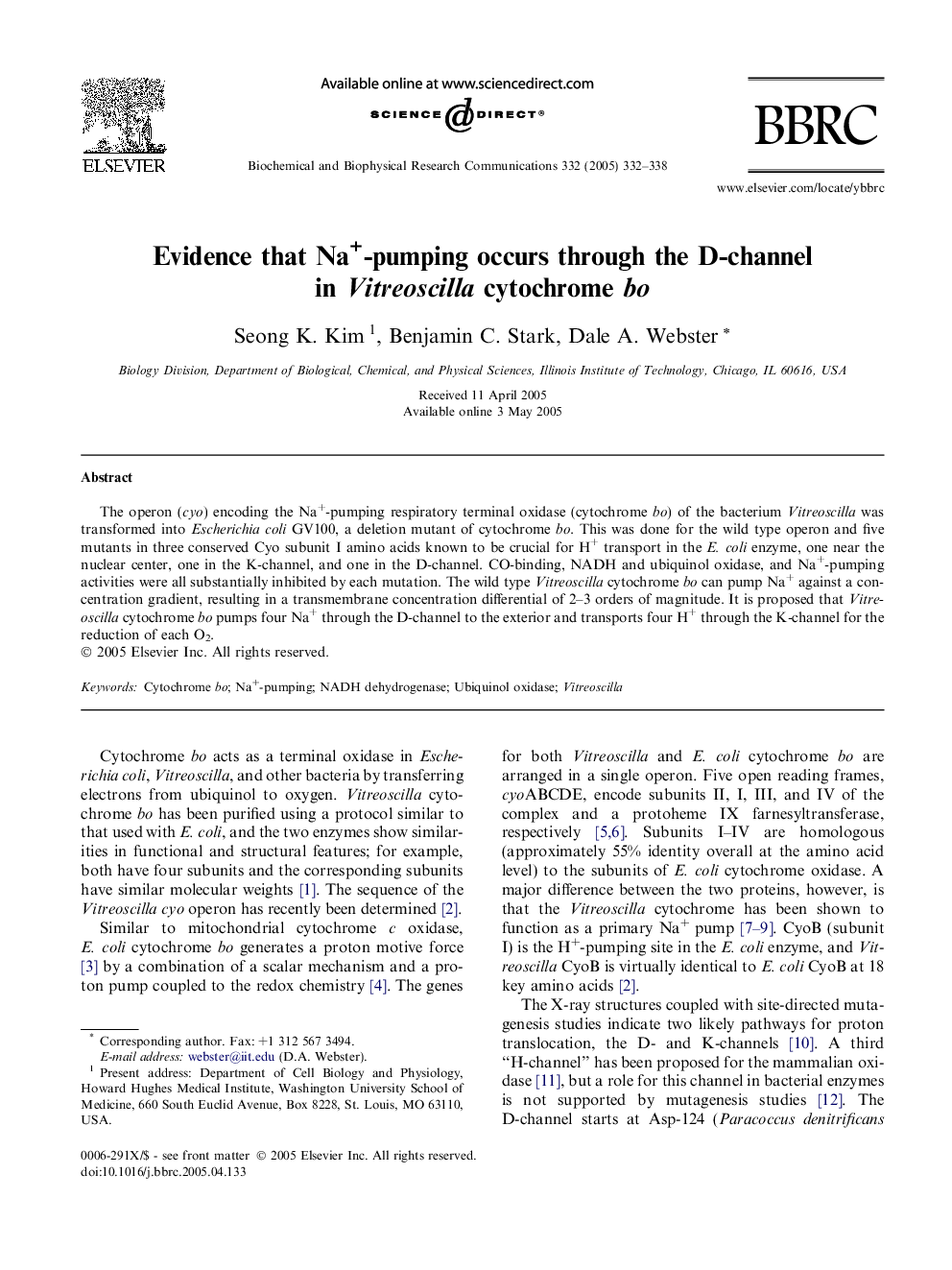| Article ID | Journal | Published Year | Pages | File Type |
|---|---|---|---|---|
| 10768489 | Biochemical and Biophysical Research Communications | 2005 | 7 Pages |
Abstract
The operon (cyo) encoding the Na+-pumping respiratory terminal oxidase (cytochrome bo) of the bacterium Vitreoscilla was transformed into Escherichia coli GV100, a deletion mutant of cytochrome bo. This was done for the wild type operon and five mutants in three conserved Cyo subunit I amino acids known to be crucial for H+ transport in the E. coli enzyme, one near the nuclear center, one in the K-channel, and one in the D-channel. CO-binding, NADH and ubiquinol oxidase, and Na+-pumping activities were all substantially inhibited by each mutation. The wild type Vitreoscilla cytochrome bo can pump Na+ against a concentration gradient, resulting in a transmembrane concentration differential of 2-3 orders of magnitude. It is proposed that Vitreoscilla cytochrome bo pumps four Na+ through the D-channel to the exterior and transports four H+ through the K-channel for the reduction of each O2.
Related Topics
Life Sciences
Biochemistry, Genetics and Molecular Biology
Biochemistry
Authors
Seong K. Kim, Benjamin C. Stark, Dale A. Webster,
